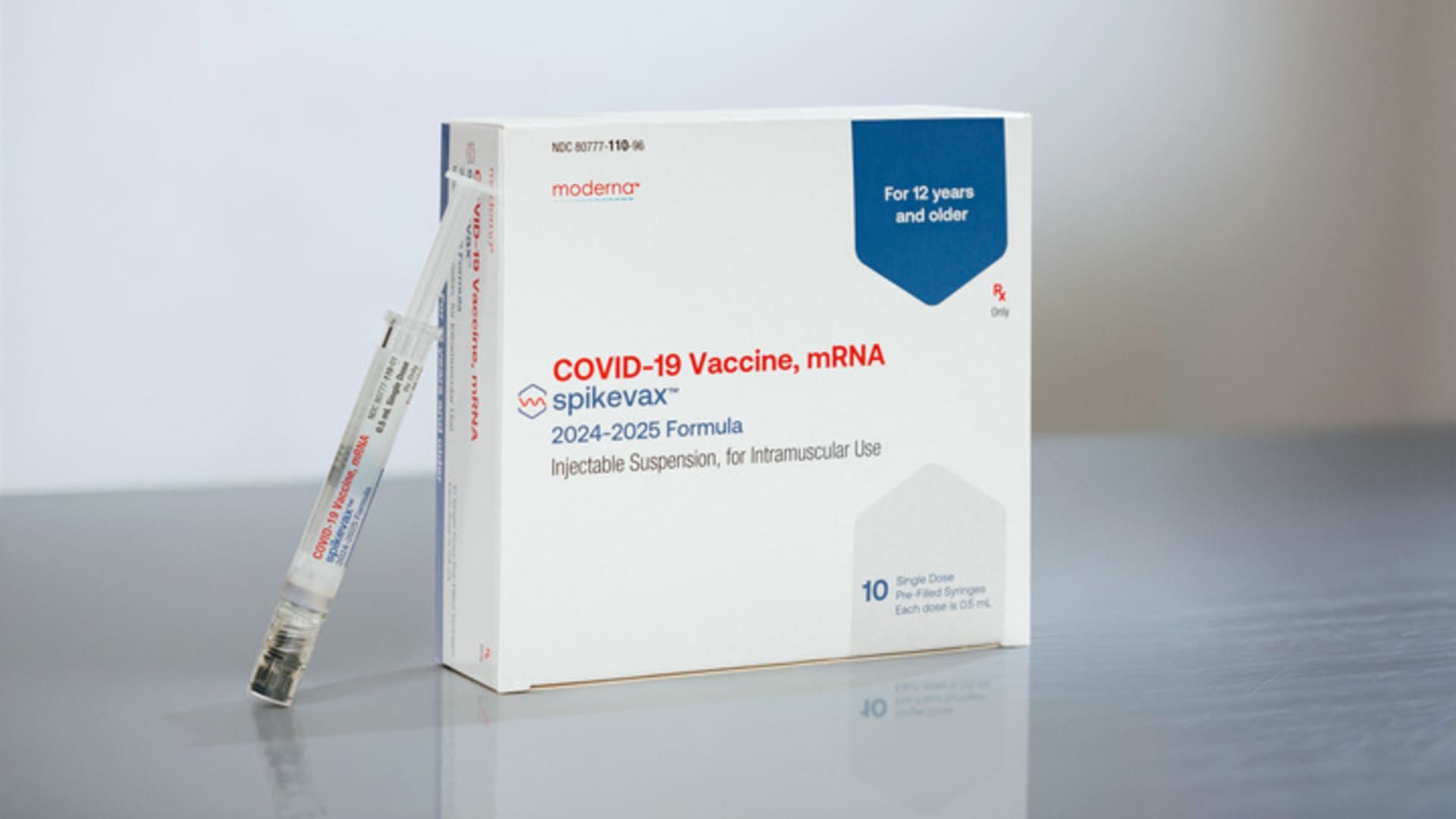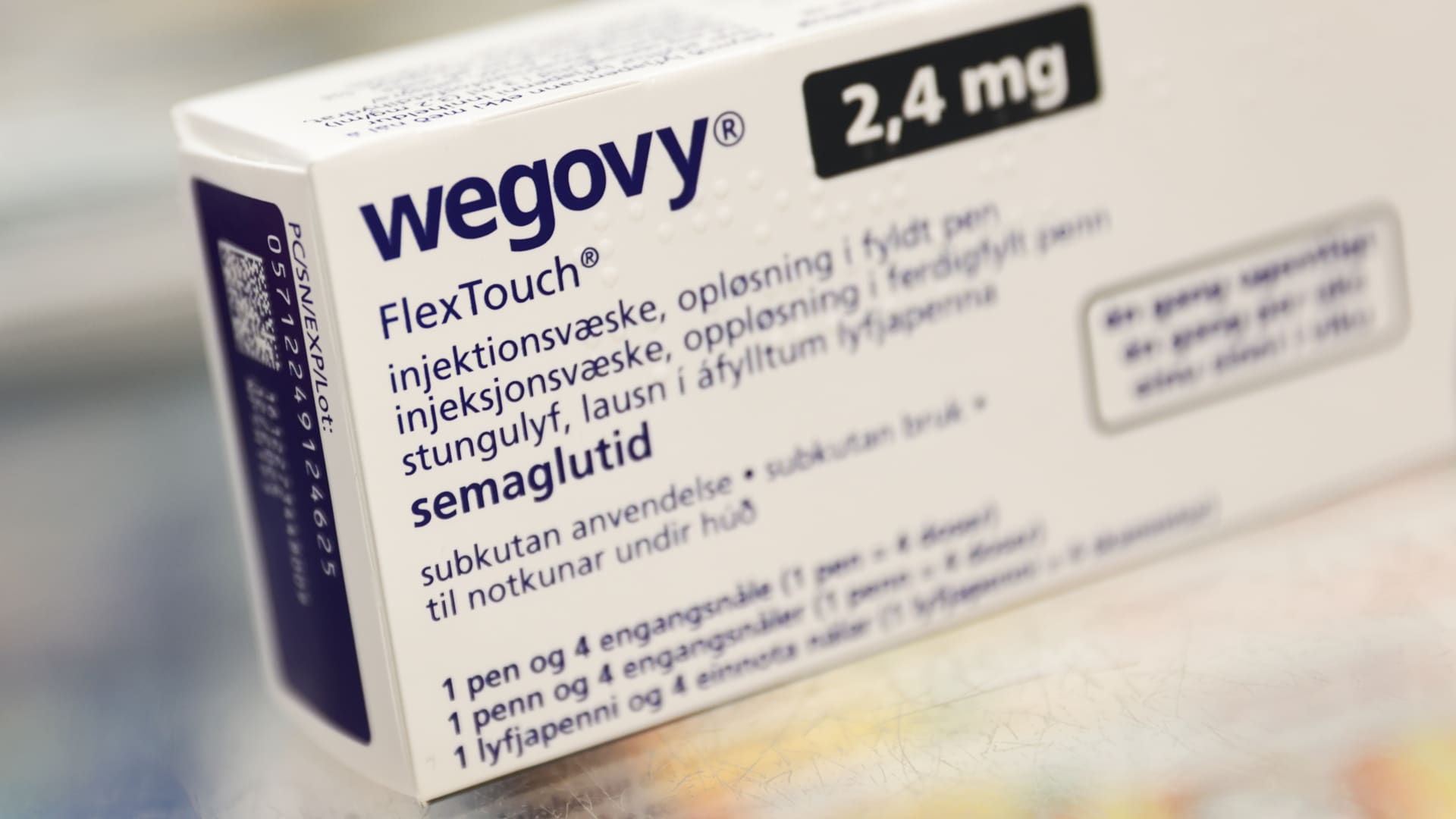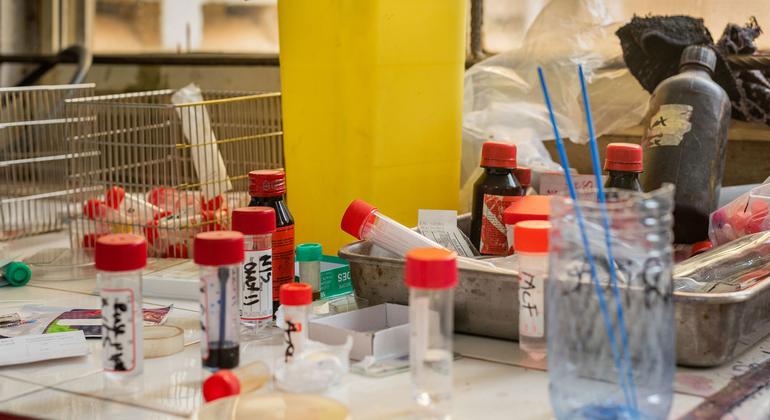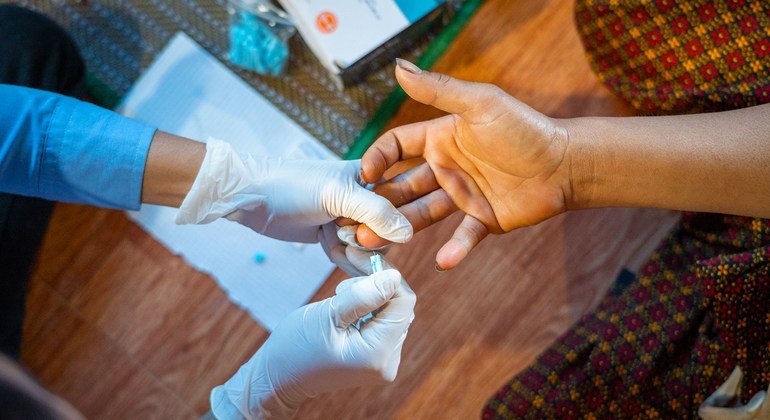Moderna Covid-19 Vaccine mRNA Formula 2024-2025.
Courtesy: Moderna
A version of this article first appeared in CNBC's Healthy Returns newsletter, which brings the latest health care news straight to your inbox. Subscribe here to receive future editions.
It's that time of year again. A new round of COVID vaccines is on the way for Americans.
Last week, the Food and Drug Administration approved updated mRNA-based vaccines from Pfizer and Modern Amid a relatively large summer surge in the virus, here's what you need to know, including how the vaccines are different this time around, who's eligible, where to get vaccinated and more.
What makes these shots different?
U.S. health officials have long warned patients to expect annual updates to COVID-19 vaccines as the virus mutates into new strains that can evade the immunity people develop from previous vaccinations or infections. It's similar to how new flu vaccines are rolled out in the United States each year.
This time, the Pfizer and Moderna vaccines are designed to target a strain called KP.2, a descendant of the highly contagious JN.1 omicron subvariant that began circulating widely in the United States earlier this year.
KP.2 was the dominant strain of the virus in May but now accounts for only about 3% of all U.S. cases as of Aug. 17, according to the latest data from the Centers for Disease Control and Prevention.
Still, both Pfizer and Moderna have said their new vaccines may produce stronger immune responses against other circulating variants, such as KP.3, than last year's round of shots targeting the XBB.1.5 omicron strain.
KP.3 accounts for nearly 17% of cases in the U.S., while a related strain called KP.3.1.1 accounts for nearly 37% of cases, according to CDC data.
“The good news so far is that the updated vaccine closely matches the KP.3 virus family, which continues to grow in prevalence,” CDC Director Mandy Cohen told reporters during a briefing Friday.
Who is eligible?
CDC recommends that everyone 6 months and older get one dose of the new COVID vaccine.
To maximize protection, people should wait at least two to three months from their last vaccination or Covid infection before getting one of the updated vaccines, Dr. Peter Marks, director of the FDA's Center for Biologics Evaluation and Research, told NPR last week.
Health officials have also stressed the importance of high-risk people staying up to date with their COVID-19 vaccinations. That includes people 65 and older and those who are immunocompromised or have serious medical conditions.
When will vaccines be available?
Following approval last week, Pfizer and Moderna said they expected their new vaccines to be available in pharmacies, hospitals and clinics across the United States “in the coming days.”
Walgreens said patients can now schedule vaccination appointments at stores nationwide, according to a statement Thursday. Appointments for people 12 and older are available starting Sept. 6, the company said.
Meanwhile, CVS's online vaccine scheduler is offering appointments for Wednesday. Rite-Aid's vaccine scheduler is showing appointments for early September.
The CDC plans to relaunch its vaccine appointment locator once vaccines become more widely available.
When should I get vaccinated?
The FDA's Marks told NPR that he would likely get vaccinated “as soon as possible” because the variant targeted by the updated vaccines is “reasonably close” to strains currently circulating in the US.
But he said some people might consider waiting until September or October if they want to maximize their vaccine protection during a potential Covid surge in the winter and holiday season.
“Getting vaccinated sometime between September and early October seems like a pretty reasonable thing to do to help maintain protection through the December/January period,” Marks told the outlet. “It's not something that suddenly stops. It's not something that suddenly cuts off at three or four months. It's just that immunity will wane over time.”
Can I get it for free?
Most private insurance plans, as well as federal Medicare and Medicaid programs, cover the cost of COVID vaccines.
Children can also receive free vaccines through a federally funded program called Vaccines for Children.
Meanwhile, the CDC’s Bridge Access Program, which was designed to provide free Covid vaccines to uninsured and underinsured Americans, will not reopen this year.
But the CDC has found $62 million in funding for state and local immunization programs to cover the cost of Covid vaccines for uninsured and underinsured adults, Dr. Demetre Daskalakis, director of the CDC’s National Center for Immunization and Respiratory Diseases, told reporters during last week’s briefing.
Can I get the Novavax vaccine?
Novavax has applied for approval of a new protein-based vaccine targeting the JN.1 strain. The company said its vaccine should provide protection against descendants of that strain, such as KP.2.3, KP.3, KP.3.1.1 and LB.1.
In a statement last week, Novavax said it is working “productively” with the FDA as the agency completes its review. Novavax expects its vaccine to receive authorization in time for the peak vaccination season in the United States.
Feel free to send tips, advice, story ideas and information to Annika at [email protected].
The latest in healthcare technology: CNBC tests Dexcom's new Stelo CGM
Jaqué Silva | SOPA Images | Light Rocket | Fake Images
Earlier this month, I started testing a new continuous glucose monitor from the diabetes management company. DexcomIt's called Stelo and it's the company's first product sold over the counter.
A continuous glucose monitor, or CGM, is a small sensor that attaches to the skin and measures glucose levels in real time. Glucose is a type of sugar that people get from carbohydrates and is the body's main source of energy.
Each person's glucose levels fluctuate, but high levels can lead to serious health problems, such as diabetes, heart disease, and kidney disease, over time. CGMs are often prescribed to patients with diabetes so they can monitor their glucose levels and receive alerts in case of emergencies.
Stelo is primarily designed for adults with prediabetes or Type 2 diabetes who don't use insulin, though people without either condition can also get it. The device launched in the U.S. on Monday after the Food and Drug Administration approved it in March.
Users can purchase a one-month supply of Stelo online for $99, or sign up for an ongoing subscription for $89 a month. Patients can also use their flexible spending accounts and health savings accounts to pay for it, Dexcom said. Dexcom is working with Amazon to make deliveries of Stelo.
I've been using the sensor for a couple of weeks now and have already learned a lot. I think it's an easy product to try out for an accessible introduction to understanding glucose data.
Once the sensors arrive at your home, everything you need is in the box. First, place the sensor on your arm and pair it with the Stelo app.
The app tells you exactly what to do, so there's no need to get nervous. I wiped the back of my right arm, placed the Dexcom applicator there, pressed the button, and the sensor was immediately attached. There's a little needle in the applicator that can feel a little disconcerting, but I didn't feel anything.
The CGM connects to the Stelo app via Bluetooth and then takes about half an hour to warm up.
When I got to this step the first time, I ran into some issues. Once my device warmed up, I got an error message that said “Brief problem with sensor.” It told me not to take off the CGM and that the problem would resolve itself within up to three hours. I left it on for the rest of the day, but in the evening, I noticed some light bleeding around the sensor.
I decided to take off the CGM, which can be done by peeling off the sensor like a sticker. I tried again with a new sensor on the other arm, and it warmed up and worked fine. I have had no further bleeding issues. If you have any issues with Stelo while using it, you can message the website's chat feature to ask questions or get a replacement if needed.
Overall, I think the sensor is pretty easy to use. It's waterproof and lasts 15 days straight (a new record for Dexcom). It's gray, about the size of a quarter, and about half an inch thick. While it did snag occasionally when I wore long sleeves, I felt like I could wear anything over it. I didn't notice it while sleeping, either.
I also found the Stelo app interface to be easy to use, and I think Dexcom does a good job of presenting the data in a way that isn't overwhelming or confusing.
On the Stelo home page, you'll see your latest glucose reading, which updates every 15 minutes. You'll also see a graph of your daily readings, which includes a shaded green area to indicate your “target range.” That range is what Dexcom recommends users try to maintain for their glucose levels, based on existing medical standards.
The tab next to the home page is the “Events” page, where you can log meals, activity, finger sticks (which are another way to measure blood sugar), or other notes. You don’t need to log every little detail of your day, but Jake Leach, Dexcom’s chief operating officer, told me it’s important to log when you experience a glucose spike.
Glucose spikes occur when the amount of sugar present in your bloodstream increases rapidly and then decreases. This usually happens after eating. Stelo will notify you when you experience a noticeable spike, and recording it can help you think through what might be causing them, Leach said.
If this is your first time using a CGM, I recommend reading the articles in the Learn tab of the app. They are short and help break down concepts like what glucose is, what affects it, and why it is important.
In just a couple of weeks, I learned a lot about how my body responds to food and activity with Stelo. And now that the technology is available over the counter, I wouldn’t be surprised if CGMs become the next big wearable tech device in the U.S.
Feel free to send tips, advice, story ideas and information to Ashley at [email protected].











